How to Dispose of Grass Clippings in 7 Easy Ways
Author: Chris Miller | Editor: Omar Alonso
Review & Research: Jen Worst & Chris Miller
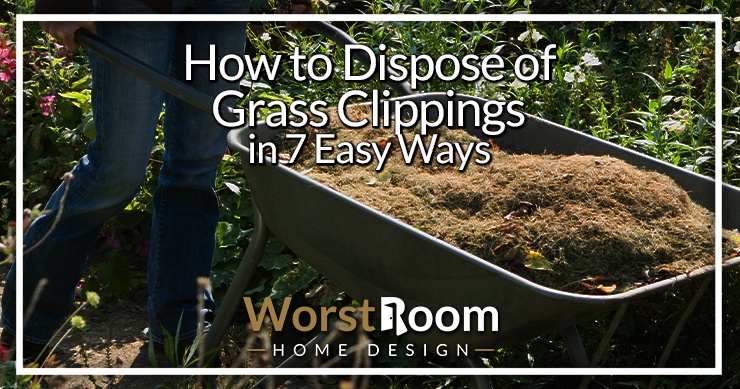
Do you love the smell of a freshly cut lawn? There’s something about the smell of cut grass that symbolizes the best of summer, embodying the theme of the season. Unless you’re using a ride-along mower, cutting the grass is hard work for homeowners. What's worse in figuring out how to dispose of grass clippings.
After plenty of sweat and effort, you wind up with a perfectly trimmed lawn and a bag full of clippings. As you stand there and admire your handy work, what on earth will you do with all the grass clippings?
Depending on the size of your lawn, you could have a few trash bags worth of cut grass needing a new home. This post gives you a few ideas of what to do with grass clippings after mowing.
What to Do With Grass Clippings After Mowing - 7 Options
So, what do you do with your grass clippings if you don’t want to leave them to decompose on your lawn? We have a few ideas on safely disposing of this biomass without attracting pests and disease into your yard. Let's look at 7 options for how to get rid of grass clippings...
1) Leave Grass Clippings on the Lawn
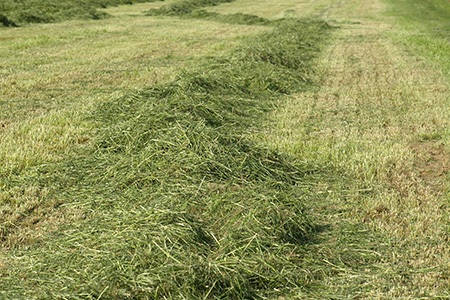
If you don’t mind the look of clippings on your lawn, leave them to dry out on your grass. The blades will dry up to a fraction of the cut size in a few days, and the wind blows them around the yard. They’ll find their way into your flowerbeds, releasing much-needed nitrogen into the soil to feed your plants.
Provided you don’t have any disease in your lawn, there’s no risk of anything bad happening from leaving the clippings to dry out. It’s a convenient alternative to bagging up and disposing of your clippings in the trash. Leave it to nature to take care of the problem for you.
Many gardeners like mowing their lawn without the bag attachment on the mower, and they’ll leave the clippings on the lawn after they finish the job. Many types of lawn mowers have multiple blades that will chop up the grass fine enough that it's okay. Leaving your clippings on the grass has some advantages for grass health but also some disadvantages.
Don’t leave your clippings on the lawn in the following scenarios.
- Remove grass clippings from areas where they might enter storm drains and cause blockages.
- Remove clippings if your lawn has disease infestations like dollar spot, rust, or leaf spot. The fungi like clinging to the clippings, and the wind will spread them throughout your garden.
- If your lawn is wet or you have tall grass before mowing, the clippings mat together, smothering the lawn.
Otherwise, as long as you haven’t allowed the grass to grow too tall, the grass clippings will decompose where they are and return nutrients to the soil and growing grass. So, how to dispose of grass clippings? Don't bother!
2) Compost Your Clippings
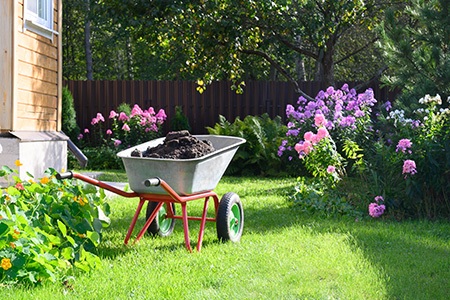
The first strategy is to add your clippings to your home compost pile. Composting is a great way for homeowners to build their soil without relying on chemical fertilizers and commercial gardening products.
Creating organic compost at home has several advantages for your garden and wallet. You get high-quality fertilizer for your flower beds and less strain on your annual gardening budget. This is also why you don't stack them in a fire pit to dry out. They won't, they'll just grow mold. So scratch that off your list of how to dispose of grass clippings.
Composting your clippings involves mixing them with other organic materials from your garden. You’ll add a small amount of soil, and microorganisms start the composting process for you, generating heat to break down the organic materials.
Grass clippings are a fantastic addition to your compost pile due to the high nitrogen content in the blades. Like mulches, adding a layer of grass clippings to your compost heap leads to odors produced by anaerobic decomposition, so keep it away from your home in the corner of the yard. Beyond that, grass clippings make for great mulch alternatives, though they'll decompose many times faster.
It’s vital that you don’t add clippings to your compost heap if you recently used herbicides or pesticides on your lawn. Remove weeds from the clippings before mulching to prevent weeds from spreading to other garden areas. Don't be sneaky by adding fast working weed and feed to your garden either, before or after the desirables are growing.
3) Leave Them Out for Curbside Composting
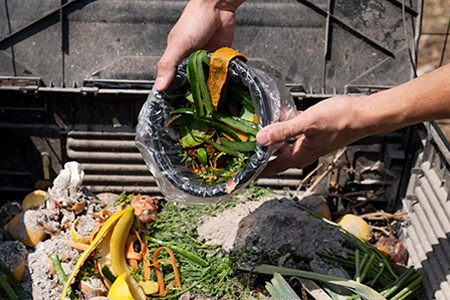
If companies or your community offer curbside composting in your area, contribute your clippings to the cause. Curbside composting is a way better use of your clippings than just tossing them in the trash. Just make sure your curb is far away from the house because you risk having maggots in your compost, which means flies too.
This approach means you’re sending less waste to the landfill, and the clippings don’t generate carbon emissions as they decompose. Farmers and landscapers use this compost to replace their use of chemical fertilizers.
So, there’s less chemical runoff from landscaping projects and farms contaminating groundwater and rivers. While curbside composting programs require vehicles to transport the clippings to the site, it’s far more beneficial to the environment than dumping them in the trash.
4) Donate Them to Your Neighbors or Local Farms
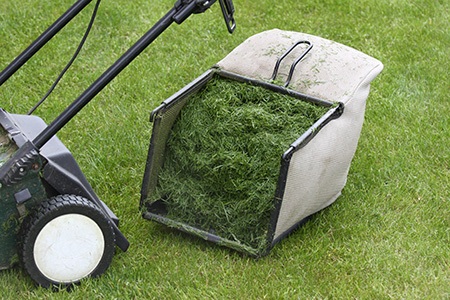
Another option for disposing of your grass clippings is to donate them to your neighbors or to local farms in your area. Like the strategy of using curbside composting, donating your clippings is far more sustainable than tossing them in the trash.
You’ll find it surprising how many neighbors in your area will gladly take your clippings off your hands for their compost heap. If you live in a more rural area, speak with local farmers, and offer them your clippings. Most of them will gladly accept your offer and send someone to collect them after you mow.
5) Use Your Clippings for Mulch
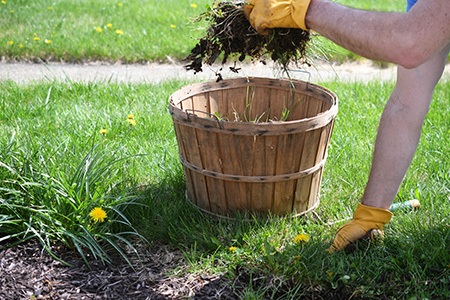
Mulching is an important task for gardeners. To maximize flower yield and keep your garden healthy, you need to mulch. Mulching around flowerbeds, the vegetable garden, and your shrubs reduce weeds and push vital nutrients into the soil to enhance organic growth.
Mulching helps to limit evaporation, conserving vital water sources. Grass clippings are great for mulching; stick to a layer around one to two inches thick. Use dry clippings and wet grass mats and limit oxygen from getting into the soil, smothering your plants.
Reducing oxygen in the soil leads to the anaerobic decomposition of the grass clippings and the production of odors. Don’t mulch your garden with lawn clippings if you recently treated the grass with herbicides or pesticides, as they’ll enter the soil. This is how to dispose of grass clippings in an eco-friendly way, only if you're careful about it.
6) Dispose of Clippings in a Green Waste Container
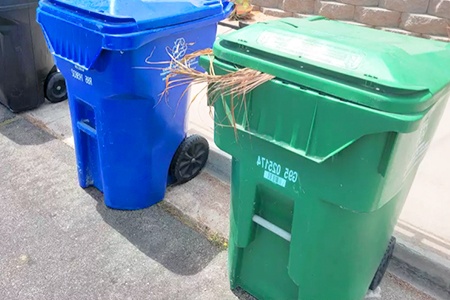
If you don’t have a compost heap, consider getting a green waste container for your yard that gets picked up on trash day. These containers aren’t available in all areas, so check with your council. If they offer the service, order your green waste bin and dump your clippings. You don't need those giant trash bag sizes either, you can dump your clippings directly in the trash can.
The municipality collects the container and dumps it in the local green waste area. Check with the council about the cost of this service as some areas may offer it for free, while others charge you for it.
7) Arrange Disposal With a Local Landscaper
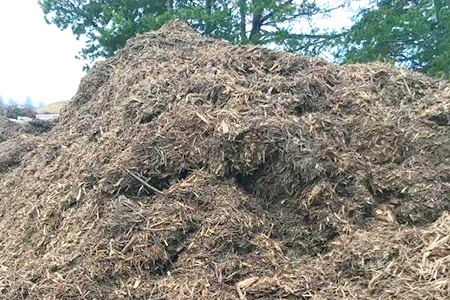
If you have a local landscaper in your area, ask them if they would like to take your clippings off your hands. Landscapers are always running new projects where they can use your organic lawn waste. You never know; they might offer you something in return after you give them a few months of clippings that benefit their business.
Do Lawn Clippings Increase Thatching?
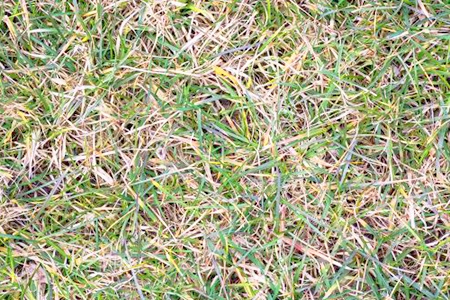
The thatch in your lawn is the layer of organic matter building up between the soil and the grass. Thatch is what gives that “spongy” feeling underfoot when you walk on the grass. The thatching will develop if organic matter builds between the lawn and soil faster than it decomposes.
Contrary to what many homeowners believe, leaving clippings on your lawn won’t contribute to building thatch. Clippings are easily-degradable compounds breaking down fast in the environment without accumulating. You don't even need to know how to dispose of grass clippings if you let them return to the earth.
Long clippings might feature thicker stems that decompose slower, but they don’t contribute to thatch buildup. So, what causes thatch? Experts believe thatch occurs from grass varieties with vigorous growth, excessive use of nitrogen fertilizer, infrequent mowing, and low oxygen levels in the soil.
Turfgrass scientists say clippings don’t form part of the thatch since they decompose and disperse too fast to provide any accumulation. So, there’s no need to stress about removing the clippings. They dry out into thin organic material and decompose a few days after mowing.
Since they’re just leaf material, clippings are 80% to 90% water, and little biomass remains after drying. The remaining material is high in nitrogen, providing food for microorganisms in your lawn and flowerbeds.
Grass stems and roots feature high concentrations of fibrous lignin that don’t break down as fast as the blades. The real cause of thatch buildup is the over-application of heavy nitrogen fertilizer or overwatering, leading to faster lawn growth.
Thatch over 0.5-inch in thickness is excessive, creating an environment favorable for the spread of disease and increased pest populations.
And That’s Where to Dump Your Grass Clippings
We’ve covered plenty of ways to get rid of or where to dump grass clippings. One of the biggest reasons not to dump your clippings in the trash is the reduction in waste delivered to landfills. The accumulation of debris at these sites means many cities and municipalities have banned dumping grass clippings at green waste sites.
According to data from the EPA’s Municipal Solid Waste website, yard trimmings accounted for 12.4% of the waste landing in green waste sites in 2022. The introduction of grass clipping bans saw this reduction decrease from 13.4% in 2010.
The biggest win for homeowners for using clippings in their yards or donating them to others is the time it saves them in dumping them at official waste centers. The EPA Greenscape program estimates leaving clippings on your lawn reduces mowing time by around 30% to 40%. So technically you don't need to know how to dispose of grass clippings if you let them fall where they are, and you get a pretty serious time savings.



